By Fran McVeigh
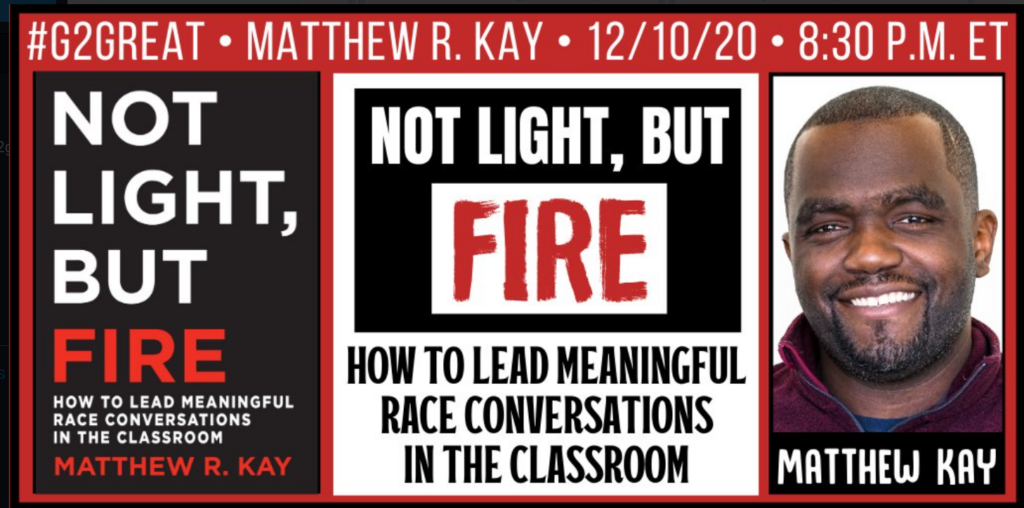
What a year 2020 has been! Ups and Downs. A pandemic. An election year. And so many conflicts. Oppression. Suppression. Police Brutality. Deaths. Riots. Peaceful Protests. Murder. Teachers feeling stifled because administrators asked them to dial down “political” actions. Matthew Kay’s book, Not Light, But FIRE: How to Lead Meaningful Race Conversations in the Classroom was the perfect book to end our chat year on our 44th night of gathering together in the Twittersphere.
We have the setting. Now for the context. We ask our authors three questions. The third one is my favorite and seems like the perfect way to begin this post.
3) What is a message from the heart you would like for every teacher to keep in mind?
We don’t have to win the game with one big home run swing. It’s not one big conversation, one big classroom moment. We can take the pressure off of ourselves to change the world with big classroom moments. We just need to make consistent, reliable contact with race conversations that are thoughtfully planned, well executed, and thoroughly reflected upon. It’s a cumulative effort, but at the end, we will see that our efforts have been more than worthwhile.
Matthew Kay, email.
When we begin “with the end in mind,” I often find it easier to consider the journey. No flashy grand slam home run. No 500 person Zoom meeting. No all school convocation.
“… consistent, reliable contact with race conversations that are thoughtfully planned, well executed and thoroughly reflected upon.” What will our journey look like? Will each journey be different? Will there be common or parallel threads?
Let’s get this journey started with some essentials for our road trip.
Selecting Our Road Map
Where are we right now? Sometimes this is best done with a self-assessment tool. Sometimes a survey or google form can begin to identify starting points. Is there formal leadership for this work or will the leadership be distributed across a variety of levels and be more collaborative in nature? What have we chosen as a collective goal? How will we know when we reach it?
Evaluating Systems for Year Long Study
What big, broad ideas are worthy of study? Sometimes the first topic is one that serves as a “model” for future actions so it is not one that will need intensive, long term study. Identifying these systems in advance helps school communities discern the depth and length of future systems studies.
Some systems identified in our chat that might be worthy of study include:
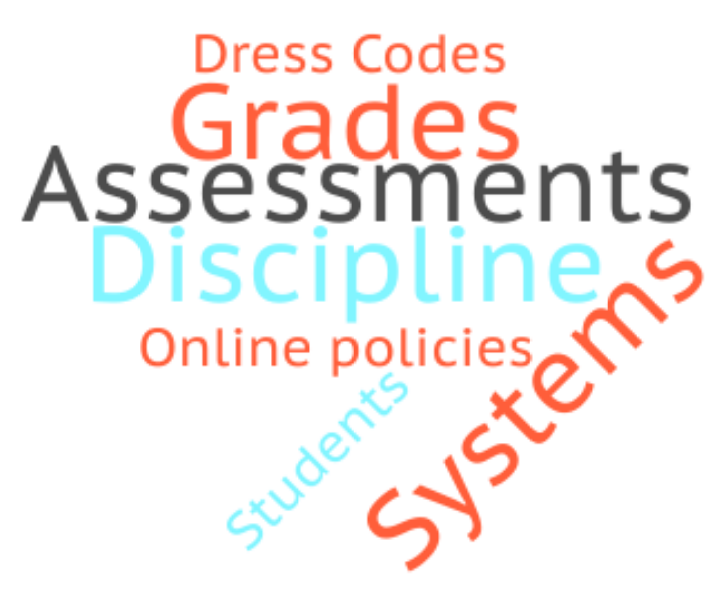
Who leads the conversations?

Leadership is tricky as the above tweets share. Everyone needs to work at being a better listener. Everyone can and should improve their conversation skills. This will take time, effort and practice. During a pandemic, all of these are at a premium and will need to outweigh time spent on issues that can be handled in a memo, an email, or a quick conversation. (Or, maybe something ends up in File 123!) What’s the prize? Collegial banter/house talk? Water cooler/Dining room table talk? And in this quote, Matt reminds us that we must “earn our seats.”
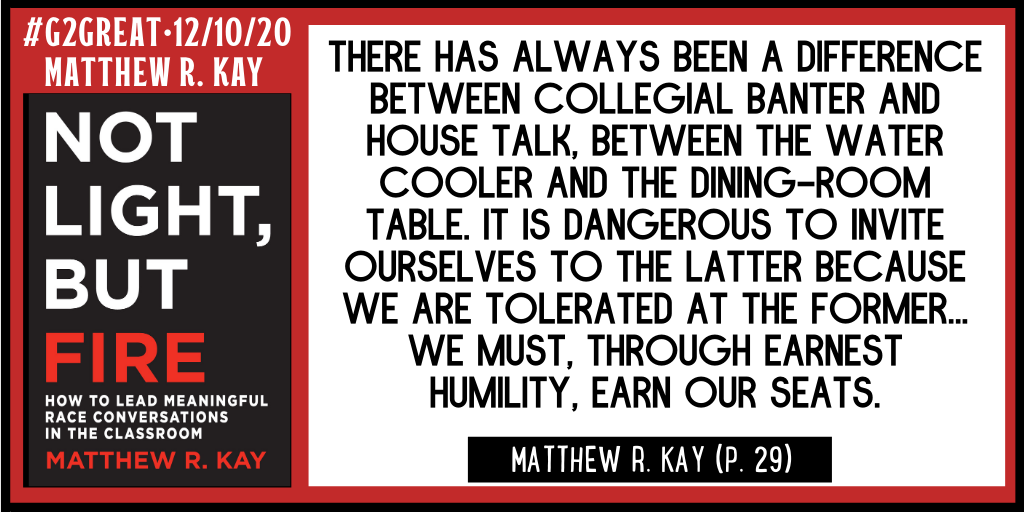
OUR GPS
Our navigational system, or North Star, is always set by our students and their needs. The pace may vary, the surfaces may include dips, bumps, and unmarked hazards, but our students and their needs will always be a priority.
Pacing
We don’t have time to wait on you.
Matthew R. Kay, Tweet 8:07 10 Dec 20
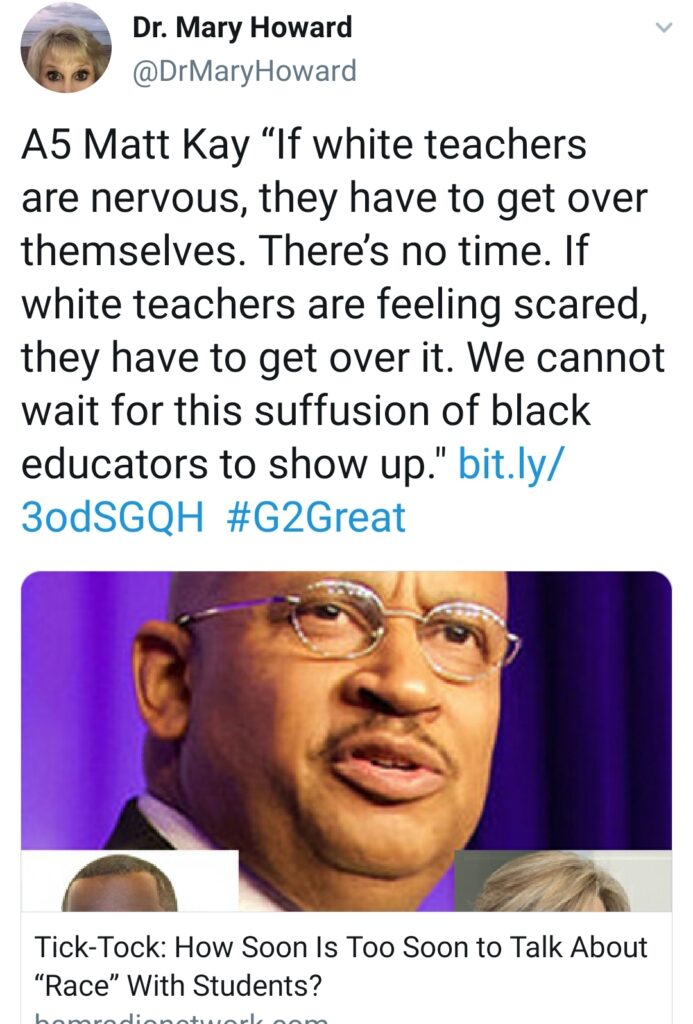
The clock is ticking. Time is not infinite for this journey.
Shared Playlist
The journey shared by teachers and students requires communication and discussion. Sharing the role of leadership in planning and implementing the travel plans is another crucial travel essential. Students should have opportunities to lead discussions (topic and time) across the day in all classes. This co-planning of the playlist for each day can be a catalyst to engage students in real-life work. Every day. Every class.
Respect for Differing Opinions
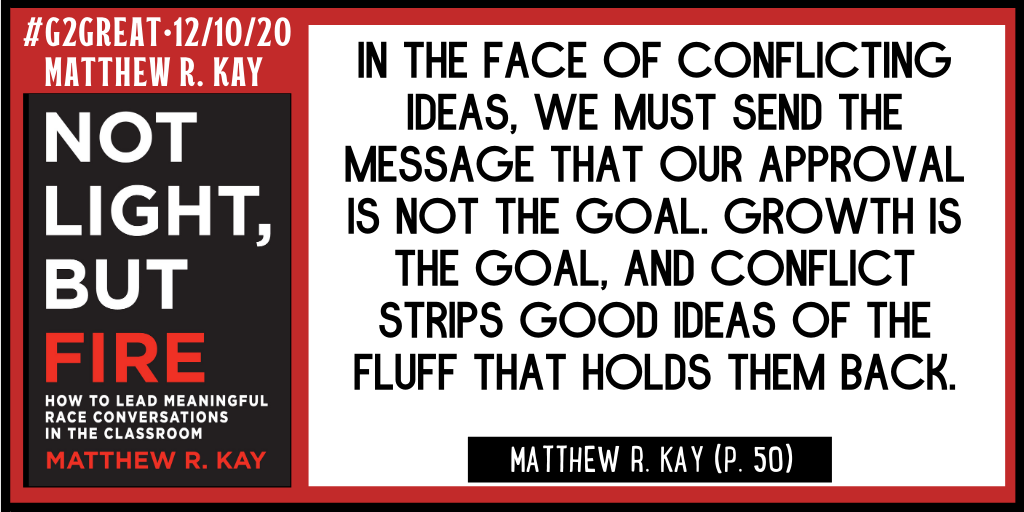
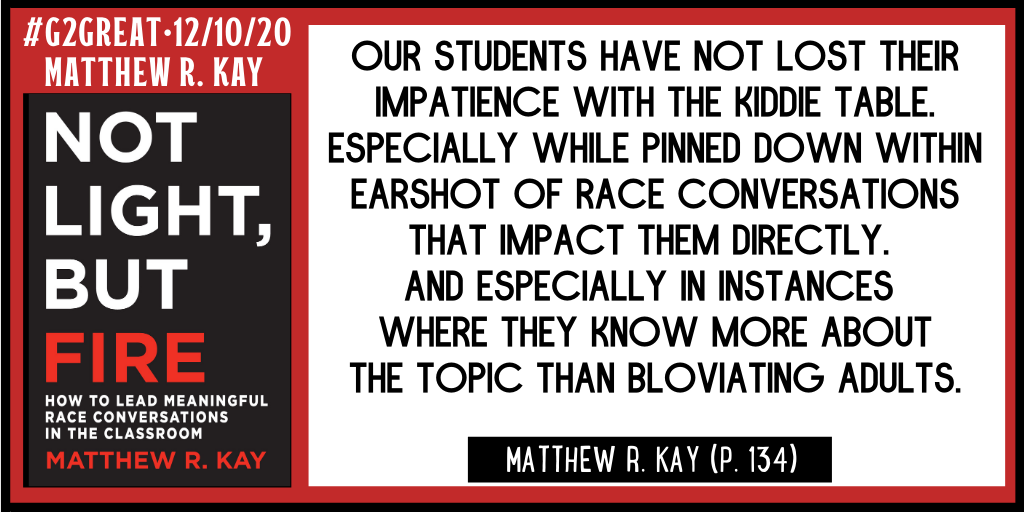
Many conversations in classrooms can be tough. Not just ones about race. Safe communities are necessary so every participant feels valued. Students need practice in taking the lead to share how life truly impacts them. Teachers need to make sure that mechanisms are in place to handle perceived and real problems. Input on ways to show learning and growth are just one example of a way that teachers can amplify student voices and share learning yardsticks. And best of all, there may be multiple choices, multiple opportunities, and multiple goals!
Bonus: Photo Album of the “Roads Taken”
1) What motivated you to write this book? What impact did you hope that it would have in the professional world?
To be honest, I have always loved telling stories, so I was always going to jump at any opportunity to write a book. I think that becomes clear in the classroom stories all throughout the book – I just love putting readers into interesting moments. I certainly had fun writing it, and I hope that folks feel like they are in my classroom as they read or listen to it. As far as impact – I just wanted to write a practical book on race conversations. I did not want to spend any time arguing that we should have race conversations – I wanted to focus on how. Too much time is spent on convincing hard-headed, hard-hearted folks that they should tackle race in the classroom. These folks aren’t going to be convinced anyway. I just want to focus on folks like me that are trying and want to get better.
2) What are your BIG takeaways from your book that you hope teachers will embrace in their teaching practices?
I just want fellow teachers to patiently build the ecosystem that can support healthy race conversations. If they commit to doing that stuff (or their own versions of that stuff) from chapters 1-4, they’ll be able to have conversations like in 5-7 (and even maybe survive pop-up conversations like the one in chapter 8.)
In conclusion, life in 2021 is going to require some changes. We would hope to see a return to increased civility. But at the same time, we would like to amplify voices and choice from our unrepresented and underrepresented students and communities. That means that we need to already be on that journey towards meaningful race conversations. “It’s not one big home run swing.” We need to practice, practice, practice so that our conversations continue to grow and develop. We need to understand the depth of the conversations that are needed to heal society. We need to begin by understanding ourselves, our role in the journey and then making sure that we are equipped with the essential tools to arrive at our destination sucessfully and joyfully. Matthew R Kay’s book provides the HOW to help you on your journey that begins with that first step!
Additional Resources:
Teacher, Teach Me Podcasts Link
Teacher’s Corner Podcast (Stenhouse) Link
Matthew R Kay’s website Link
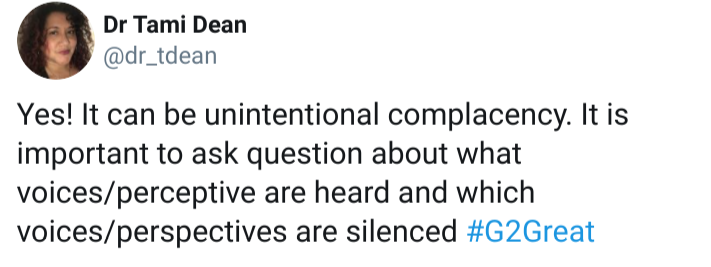

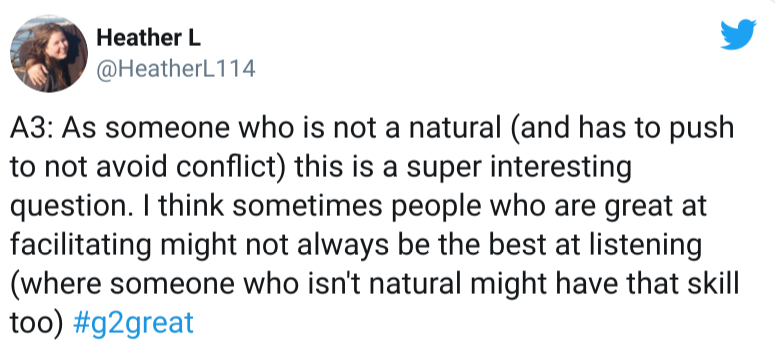
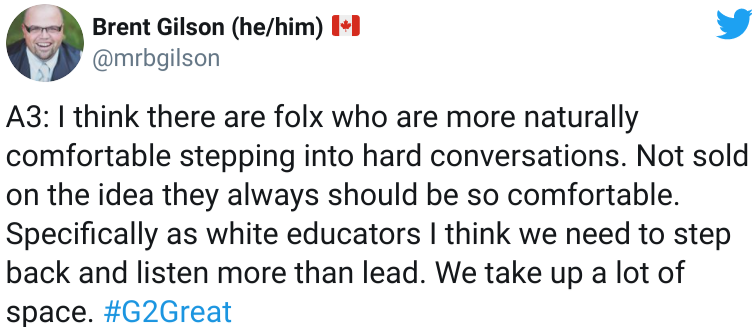
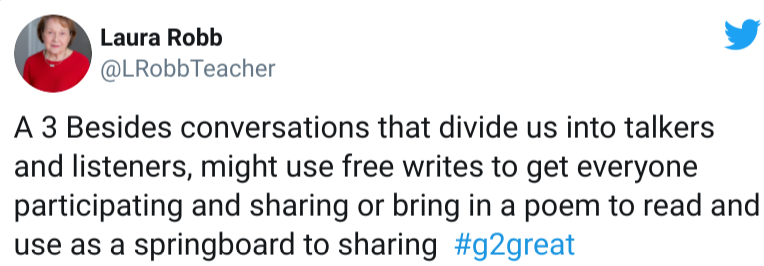
Thank you for this post! I’m keeping it on hand for future use!